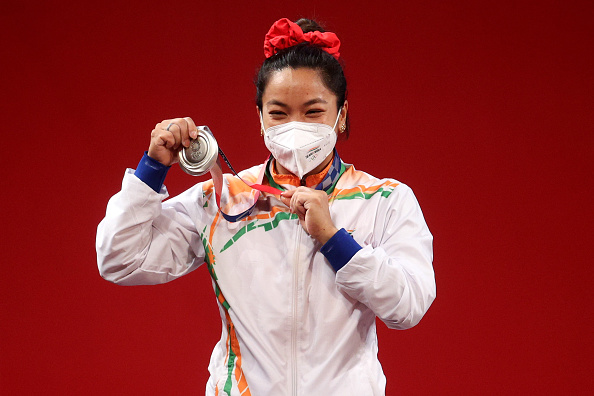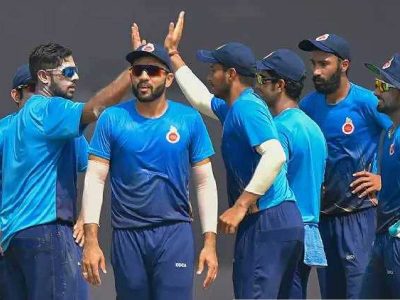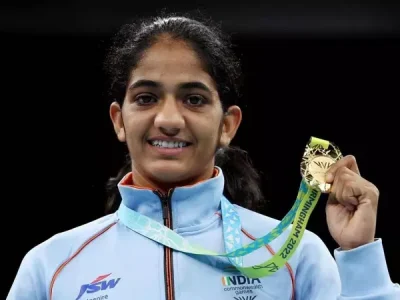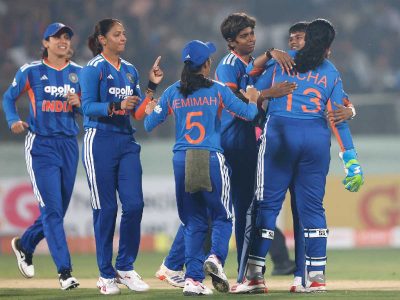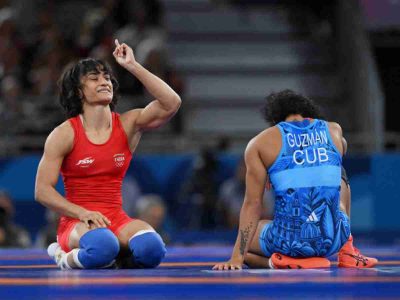Indian female athletes are not just shattering patriarchy but have also fought against all odds to bring fame to their country
In a country, predominantly prevalent with discrimination meted out towards the female gender, sports have blurred the lines in such a way that now even political class need a ‘selfie’ with these female athletes in order to win hearts of general public. But even now around the world, especially in India there are strong beliefs that some of the sports, like boxing, wrestling and weightlifting, can tamper with the beauty and “natural femininity” of the women athletes.
This is another issue that women bravehearts like MC Mary Kom or Karnam Malleswari or Phogats (Geeta and Babita) have all inspired our younger generations to not just take up but excel in these difficult disciplines. And look at how the scenario has changed over the years. From a lone potential medal winner in 1984, PT Usha, who missed a podium finish by 0.01 seconds in 400m hurdles in the Los Angeles Games, India has a list of so many women athletes who have provided some relief to a medal-starved country in the last two Games.
From Manipuri weightlifter Mirabai Chanu’s silver to Assam boxer Lovlina Borgohain’s sure bronze (semi-final still to be fought) to PV Sindhu’s bronze, India’s last five Olympic medals — including Sindhu’s silver and wrestler Sakshi Malik’s bronze at Rio 2016 — have all come from their women.
Tough, but a measured journey
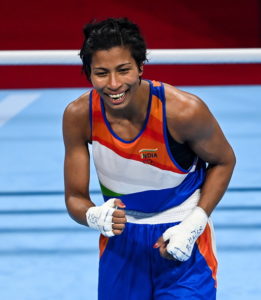
The revolution in women’s sports has come with the emergence of North-eastern girls in the sports. And 38-year-old Manipuri boxing icon, Mary Kom, has much to do with this. Even before winning the bronze medal at 2012 London, Mary Kom was a household name in India with her five World Boxing Championship gold medals. And the result is in front of us with Lovlina now stepping out of her village Baramukhia, near Assam’s border with Nagaland, into the world of fame.
But it was never an easy journey for her. It was in 2012, as a 14-year-old school kid, when she first stepped out of her village to train at Sports Authority of India’s centre in Guwahati. She only had a mobile phone with her to stay in touch with her parents and two other sisters at a far off (nearly 300 kilometres) place. Her biggest test came when she went to participate in the sub-junior nationals in Kolkata. She had no “red-coloured clothing” to wear during her bout to fight against the Blue-cornered girl. So, her coach waited for another girl in the Red-corner to finish her fight and borrow it for Lovlina.
But the girl agreed to part with her Red-corner kit with a condition that Lovlina will give her this mobile in return.
Being a kid, Lovlina knew that her mobile was her lone connection with her family. She agreed that it was the only way to stay in touch with her family. Borgohain took the hard decision and agreed to part with her mobile. But even then, she did not get the promised kit.
This incident, as per Lovlina, left a huge mark on her journey so far. Even before leaving for Tokyo, Lovlina was worried about her mother who had undergone kidney transplant surgery in February. But that didn’t divert her attention away from her Olympic target.
Lovlina is completely different from Mary Kom. The way she moves in the ring is enough to prove that. She is technically more well-rounded. Though, she can’t be compared with Mary Kom as she belongs to the next-to-next generation to her, but in reality, they are team-mates too.
Mary Kom was a champion but an unpolished boxer at the age of 23 because then the boxing was amateurish. Lovlina is refined and more technically sound regardless of whether she can move into the gold medal round or not. Lovlina idolises the great Muhammad Ali and watches his bouts before and during her competitions. The name of her coach is Mohammad Ali Qamar. She loves a line always said for Ali… ‘floats like a butterfly, stings like a bee’’
And now that she has become only the third boxer from India to win an Olympic medal, after Vijender Singh’s 2008 Beijing bronze and her idol Mary Kom’s 2012 London bronze, she is surely going to be India’s next poster girl with her killer smile.
Chak de moment for hockey girls
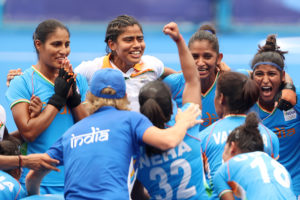
Look at this scenario in our national sport, hockey. Ever since the 1980 Moscow Games, where Indian men won their last gold medal, or for that matter where our men reached the medal round for the last time, Indian sports crazy public have always prayed with folded hands for a medal in the subsequent nine Olympic Games. India, as a country, spent tons of money on men’s hockey preparations. And all this while we all neglected women’s hockey players, who also finished in the top four teams in Moscow where the finalists were decided on the outcome of round-robin league.
And here we are with a bunch of determined women hockey players playing in the semi-final for the first time in history. All of them are mostly coming from a very humble background and from a family where they were not allowed to go out wearing modern dresses, forget shorts.
And when one of them, Vandana Katariya, was pointing her finger to the sky after scoring a hat-trick against South Africa in a close 4-3 victory to reach quarter-finals, was nothing but telling her father up there in the heavens about how much she misses him around her.
Vandana could not even attend her father’s last rites during difficult Covid times as she was training for the Olympics. Her father fought so many family and social battles for her hockey. Everyone around these girls till now wanted them to get married, and didn’t expect to bring home the gold from the Olympic Games.
Such was the sacrifices by all these female athletes that our entire sports federations now need to rethink their attitude or spending towards these brave-heart champions. They deserve no less exposure trips, just like their male counterparts, or no less funding and facilities from now onwards. No one should have any doubts about their commitment in the field. This they have proved already.
Amongst those who have now rewritten Indian women’s hockey history, seven were tested Covid positive during the second wave while training at Bengaluru’s Sports Authority of India centre. And who knows if the Govt of India may roll out a new slogan before the next 2024 Games in Paris to salute our women power… “Beti Khilao, Medal Jitao”!

